As an Amazon Associate we earn from qualifying purchases.
Tired of spending countless hours cleaning without seeing the desired results? Look no further. This article unveils remarkable research findings that offer a fresh perspective on effective cleaning techniques.
Discover how to make the most of your spring cleaning efforts, extend the lifespan of your vacuum cleaner, and eliminate hidden germs that lurk in unexpected places. We’re here to equip you with actionable tips to revolutionize your cleaning routine and help you achieve a healthier home.
Contents
- Embrace the Annual Cleaning Tradition
- Extend the Lifespan of Your Vacuum Cleaner
- Incorporate Cleaning into Your Exercise Routine
- Maximize Calorie Burn with Vacuuming
- Meet the Tiny Cleaners: The Household Casebearer
- Eliminate Hidden Bacteria on Office Desks
- Beware the Bacteria in Your Washing Machine
- Clean Smarter, Not Harder
- Banish Hidden Germs from Your Phone
- Tackle Bacteria in Your Kitchen Sponge
- Busting the Five-Second Rule Myth
- Clean Keyboards for a Healthy Workspace
- Harness the Power of Handwashing
- Conclusion
Embrace the Annual Cleaning Tradition
Did you know that 91% of Americans engage in the annual tradition of spring cleaning? According to the American Cleaning Institute, this widespread practice reflects our desire for a fresh and tidy living environment.
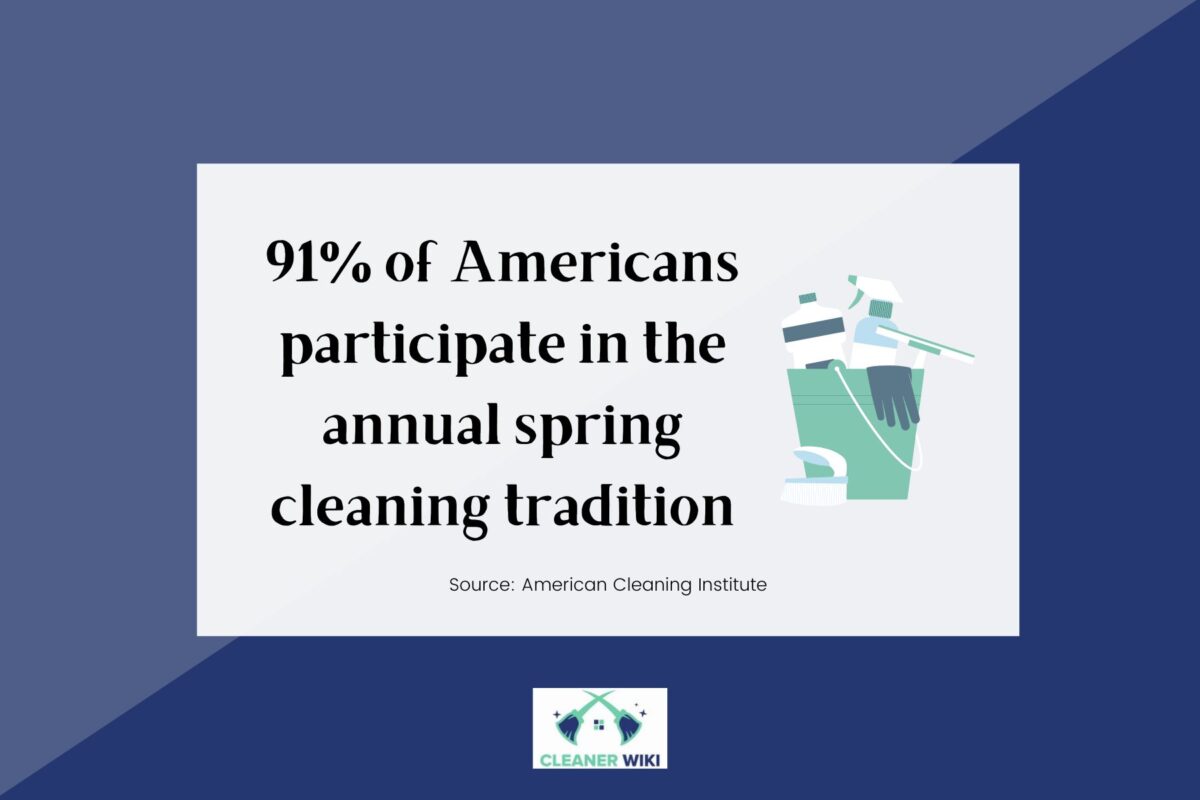
If you’re part of this majority, it’s essential to approach the task strategically to maximize the impact of your spring cleaning efforts. Here are some actionable tips to make your spring cleaning experience more effective and efficient.
- Create a detailed checklist that breaks down each room into specific cleaning tasks. This will help you stay organized and motivated throughout the process.
- Prioritize areas that accumulate dirt and clutter, such as the kitchen, bathroom, and living room. You’ll avoid feeling overwhelmed by tackling one room at a time and ensuring a thorough cleaning.
- While tackling the apparent areas like countertops and floors, it’s essential to remember those easily overlooked nooks and crannies. Dust and clean behind appliances, underneath furniture, and on shelves. Wipe down baseboards, light fixtures, and ceiling fans.
- Get your family members or roommates involved and turn it into a fun team activity. Assign specific tasks to each person, based on their strengths and preferences. This lightens the workload and makes the process more enjoyable and efficient.
By following these tips, you’ll be well on your way to achieving a thoroughly cleaned and organized home.
Extend the Lifespan of Your Vacuum Cleaner
Take a trip down memory lane to explore the fascinating world of vacuum cleaners, where one exceptional model has surpassed the eight-decade mark and is still in operational condition today. Dating back to 1937, this vacuum cleaner, crafted by Hoover, holds the esteemed title of the world’s longest-lasting.
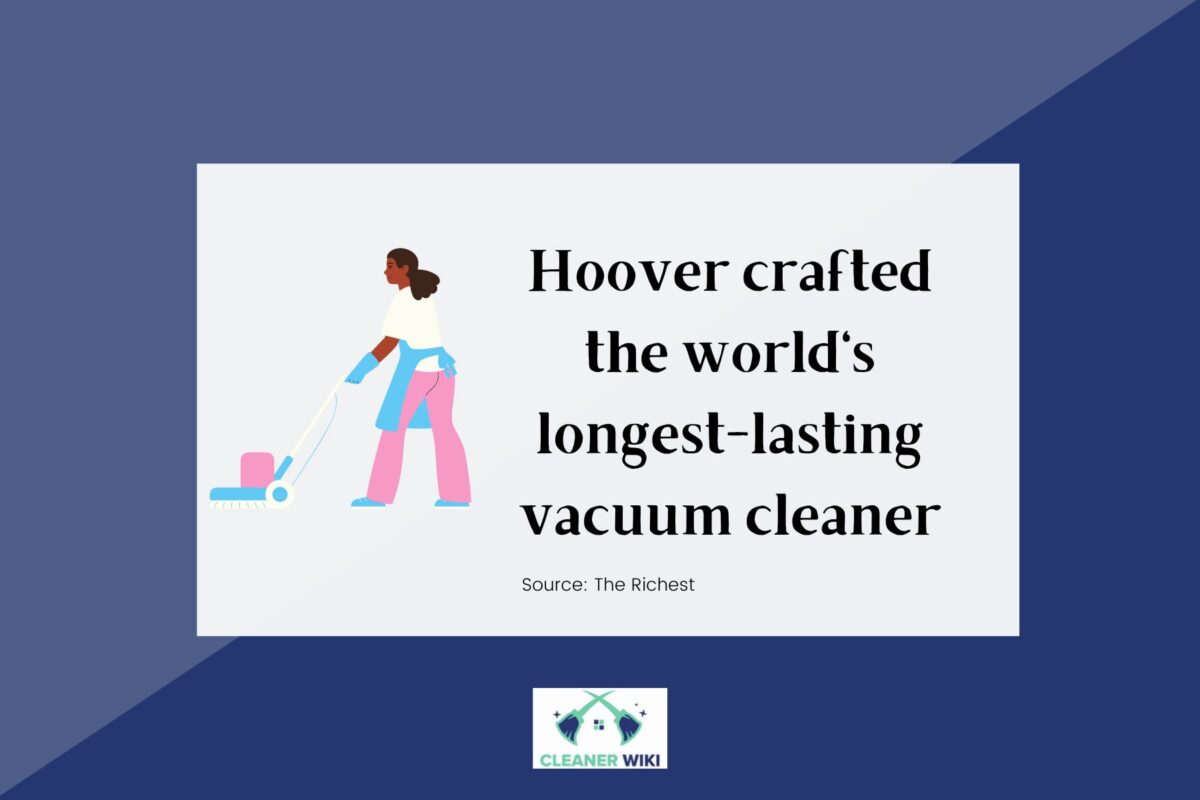
Although you may need access to this specific antique device, there are actionable tips we can learn from its longevity to enhance our cleaning skills and ensure the longevity of our modern vacuum cleaners.
- Prioritize quality: Invest in a durable vacuum cleaner from a reputable brand.
- Maintain regularly: Clean and replace filters, inspect and clean brushes and rollers, and empty the bag or canister.
- Prevent damage: Be cautious around delicate objects, and avoid vacuuming large or damaging items.
- Store properly: Neatly wrap and secure the cord. Consider using a storage bag or cover.
- Seek professional servicing: Consult certified technicians if performance declines or unusual issues arise.
By implementing these actionable tips, you can maintain the longevity of your vacuum cleaner and enjoy its efficient cleaning power for years to come.
Incorporate Cleaning into Your Exercise Routine
Who knew that cleaning your home could contribute to a more active lifestyle? In a study conducted in 2011, researchers found that people who engage in regular cleaning activities are 25% more physically active than those who don’t. This intriguing finding highlights the hidden fitness benefits of cleaning.
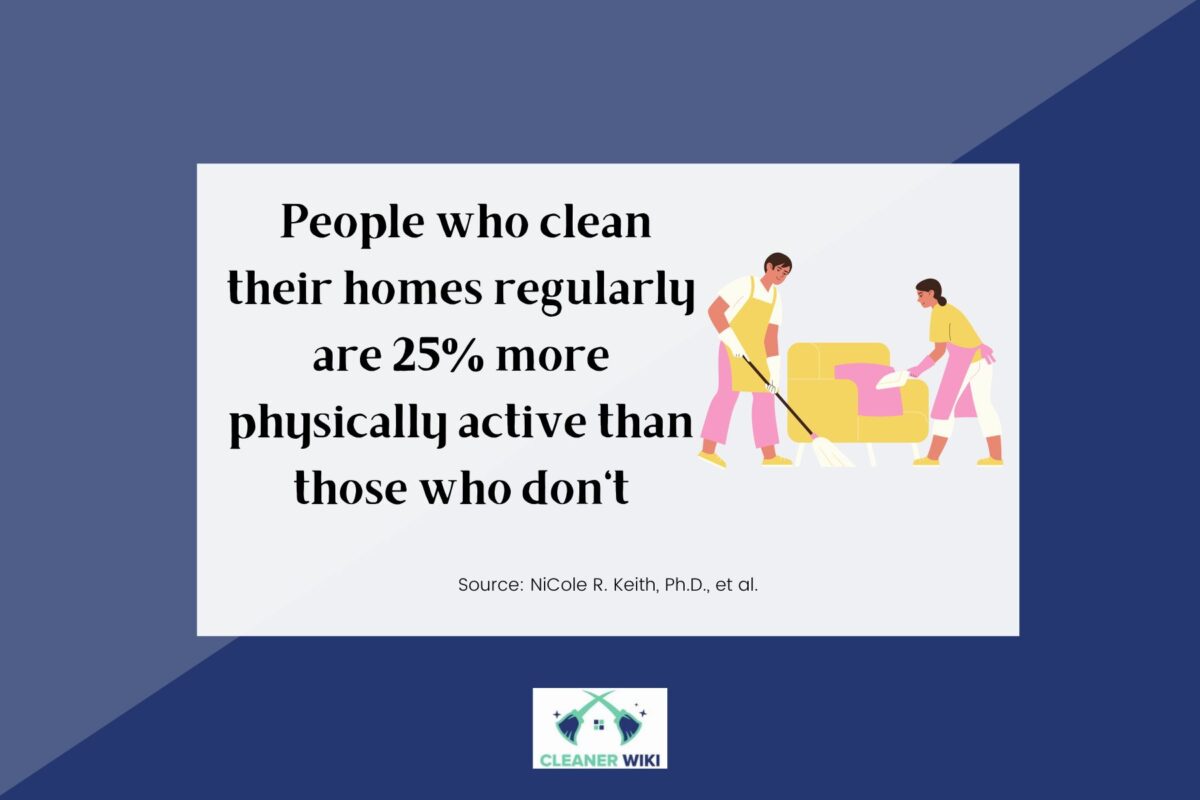
So, the next time you’re scrubbing floors or dusting shelves, take pride in the fact that you’re not only creating a cleaner living environment but also getting in some valuable physical activity.
It’s time to turn cleaning into a fun and productive workout session with these tips:
- Make cleaning a regular habit: Dedicate specific weekly days or times to cleaning tasks to ensure consistency and maximize physical activity.
- Incorporate exercise moves: Combine cleaning tasks with exercises such as squats, lunges, or arm movements to add an extra fitness element to your routine.
- Opt for manual tools: Choose manual cleaning tools whenever possible to engage your muscles and increase physical activity, such as using a broom instead of a robotic vacuum cleaner or a spray bottle and cloth for cleaning surfaces instead of disposable wipes.
Maximize Calorie Burn with Vacuuming
Did you know that vacuuming can be more than just a household chore? A study conducted in 2010 revealed that vacuuming for 30 minutes can burn approximately 119 calories, turning it into a form of exercise. If you’re looking to make the most of your cleaning routine and get some physical activity in the process, consider these actionable tips:

- Take longer strokes: Extend your range of motion by taking longer and more deliberate strokes while vacuuming. This will engage your arm muscles and increase the intensity of your workout.
- Incorporate upper body exercises: Add some exercises, such as bicep curls or shoulder presses, as you vacuum. This multitasking approach allows you to tone your arms while keeping your living space spick and span.
- Stay on your toes: Challenge your leg muscles by vacuuming while standing or lifting your heels. This simple adjustment adds an element of balance and strength training to your cleaning routine.
By implementing these tips, you can transform your vacuuming sessions into effective workouts that help you burn calories and improve your overall fitness.
Meet the Tiny Cleaners: The Household Casebearer
Did you know a small micro-animal called the “Household Casebearer” actively contributes to keeping our homes clean? This fascinating creature feeds on dust, hair, and dead insects as a natural cleaning agent. To make the most of this microscopic helper and maintain a clean home, consider these actionable tips:

- Reduce clutter: The Household Casebearer thrives in environments with plenty of hiding spots. By decluttering your home and keeping surfaces clear of unnecessary items, you can minimize potential hiding places for dust, hair, and dead insects.
- Regular vacuuming and dusting: While the Household Casebearer helps in cleaning, it’s still essential to maintain regular cleaning practices—vacuum carpets, rugs, and upholstery to remove any debris the micro-animal might have missed. Dust surfaces with a microfiber cloth to capture any remaining particles.
- Improve ventilation: Proper ventilation helps reduce humidity, creating an ideal environment for the Household Casebearer and other pests. Open windows, use exhaust fans and ensure good airflow throughout your home to create an inhospitable environment for these micro-animals.
- Seal cracks and crevices: Prevent entry points for the Household Casebearer by sealing any cracks or gaps around windows, doors, and utility openings. This helps keep them out and reduces the entry of other pests.
- Regularly clean pet areas: If you have pets, their hair and dander can provide a food source for the Household Casebearer. Regularly clean pet bedding, vacuum areas they frequent, and groom your pets to minimize their contribution to the micro-animal’s food source.
Eliminate Hidden Bacteria on Office Desks
Did you know that office desks harbor up to 400 times more bacteria than toilet seats? This startling finding highlights the importance of keeping our workspaces clean and sanitized. To create a healthier and more hygienic office environment, consider these actionable tips:
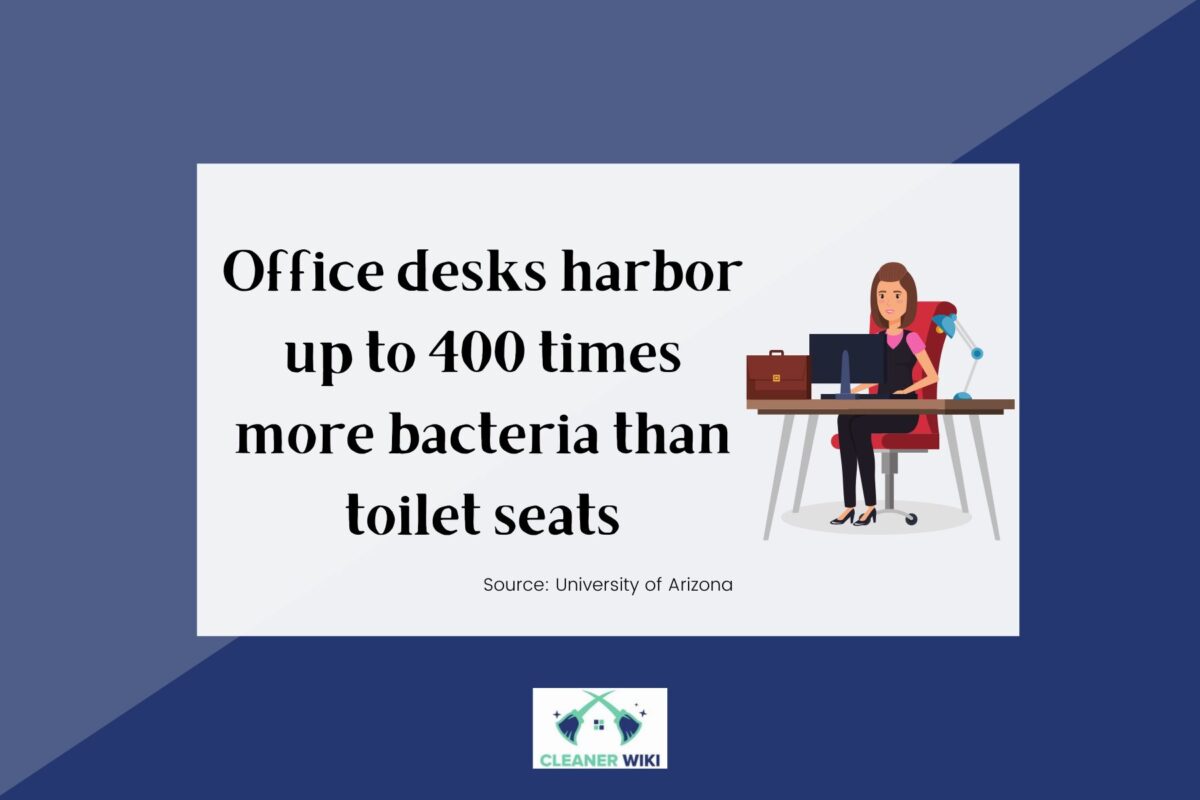
- Regularly disinfect surfaces: Use disinfectant wipes or sprays to clean your desk surface, keyboard, mouse, and phone regularly. Focus on high-touch areas to eliminate bacteria and prevent the spread of germs.
- Practice proper hand hygiene: Wash your hands frequently with soap and water for at least 20 seconds, especially before and after using shared office equipment or touching joint surfaces. If soap and water are unavailable, use hand sanitizer with at least 60% alcohol content.
- Avoid eating at your desk: Food particles can attract bacteria and pests. Designate a separate area for meals or use designated break rooms to minimize the risk of cross-contamination.
Beware the Bacteria in Your Washing Machine
It may surprise you, but your washing machine could teem with germs. A study revealed that 62% of washing machines harbor harmful bacteria, including E. coli. To maintain a germ-free laundry routine and protect your family from potential health risks, follow these actionable tips:
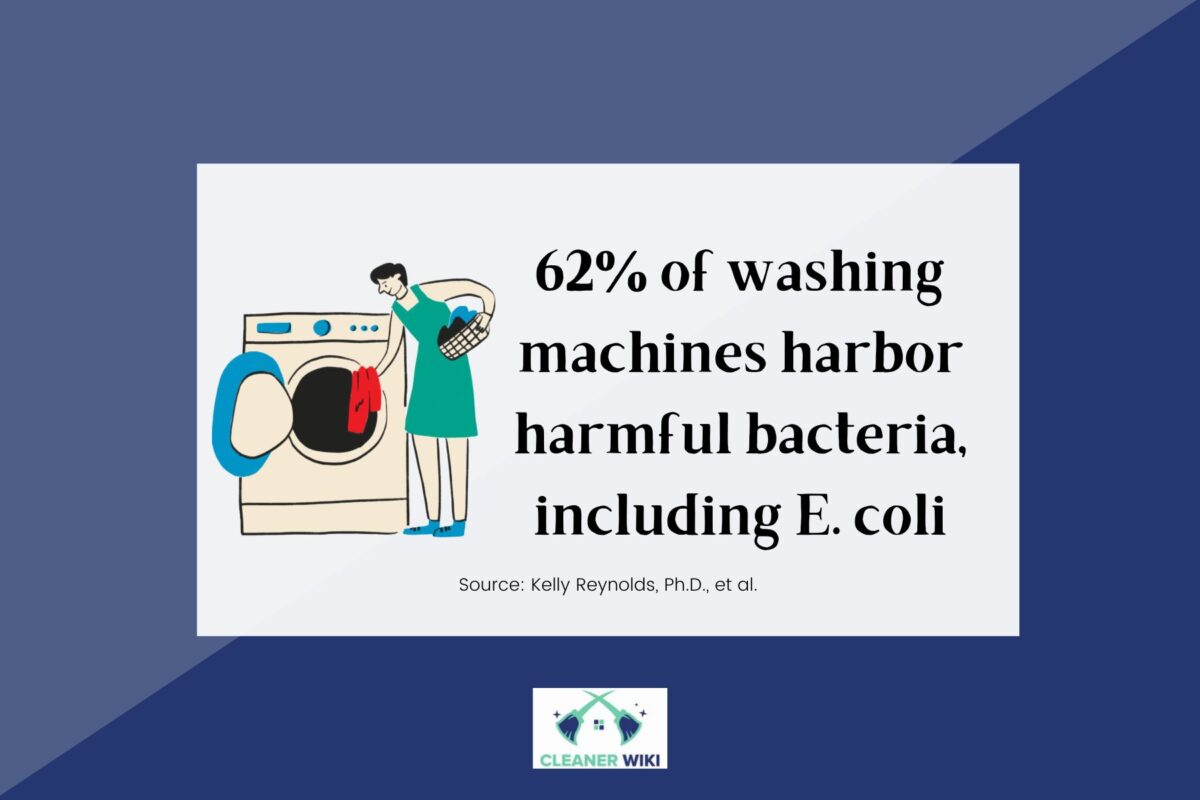
- Clean the machine regularly: Regularly clean your washing machine to remove built-up residue and prevent the growth of bacteria. Follow the manufacturer’s instructions for cleaning, or run an empty cycle with hot water and vinegar to sanitize the machine.
- Use hot water for specific loads: For items such as underwear, towels, or heavily soiled garments, consider washing them with hot water to help kill germs and bacteria. However, always check the care labels of your clothing to ensure they can withstand hot water.
- Dry clothes thoroughly: After each wash, promptly transfer your clothes to the dryer or hang them up to dry. Damp clothes can become a breeding ground for bacteria, so ensure your laundry is completely dry before storing or wearing.
Clean Smarter, Not Harder
Did you know the average American spends about 6 hours per week cleaning their home? To make the most of your cleaning time and maintain a tidy living space, try these actionable tips:
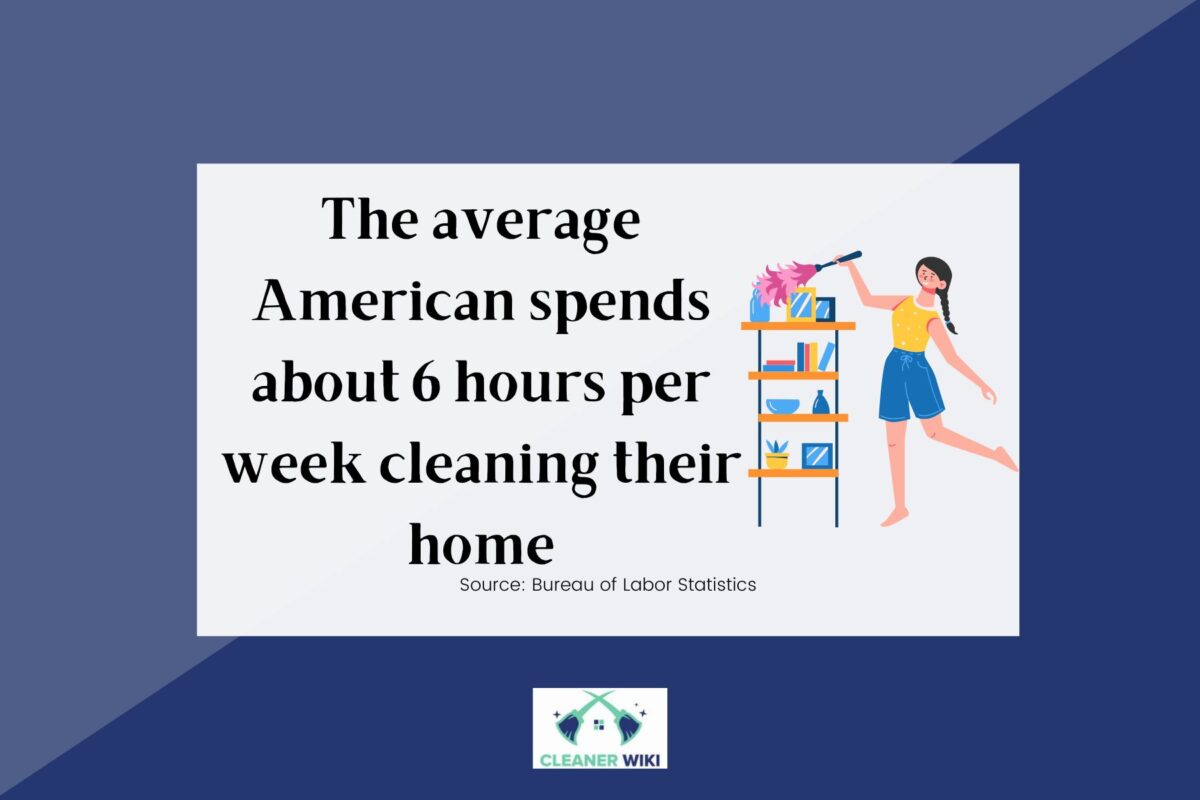
- Adopt a cleaning schedule: Establish a cleaning schedule that fits your lifestyle. Break down tasks into manageable chunks throughout the week, focusing on different areas or tasks each day to prevent overwhelming cleaning sessions.
- Use efficient tools and products: Invest in quality cleaning tools and products that streamline your cleaning process. Microfiber cloths, multipurpose cleaners, and well-designed cleaning tools can make your tasks more efficient and effective.
- Embrace decluttering: Regularly declutter your home to minimize the cleaning required. Get rid of items you no longer need, organize belongings, and create designated storage spaces to maintain a clutter-free environment.
Banish Hidden Germs from Your Phone
Did you know your cell phone could harbor more germs than a toilet seat? In a 2008 study, researchers found that mobile phones carry 10 times more bacteria than toilet seats.
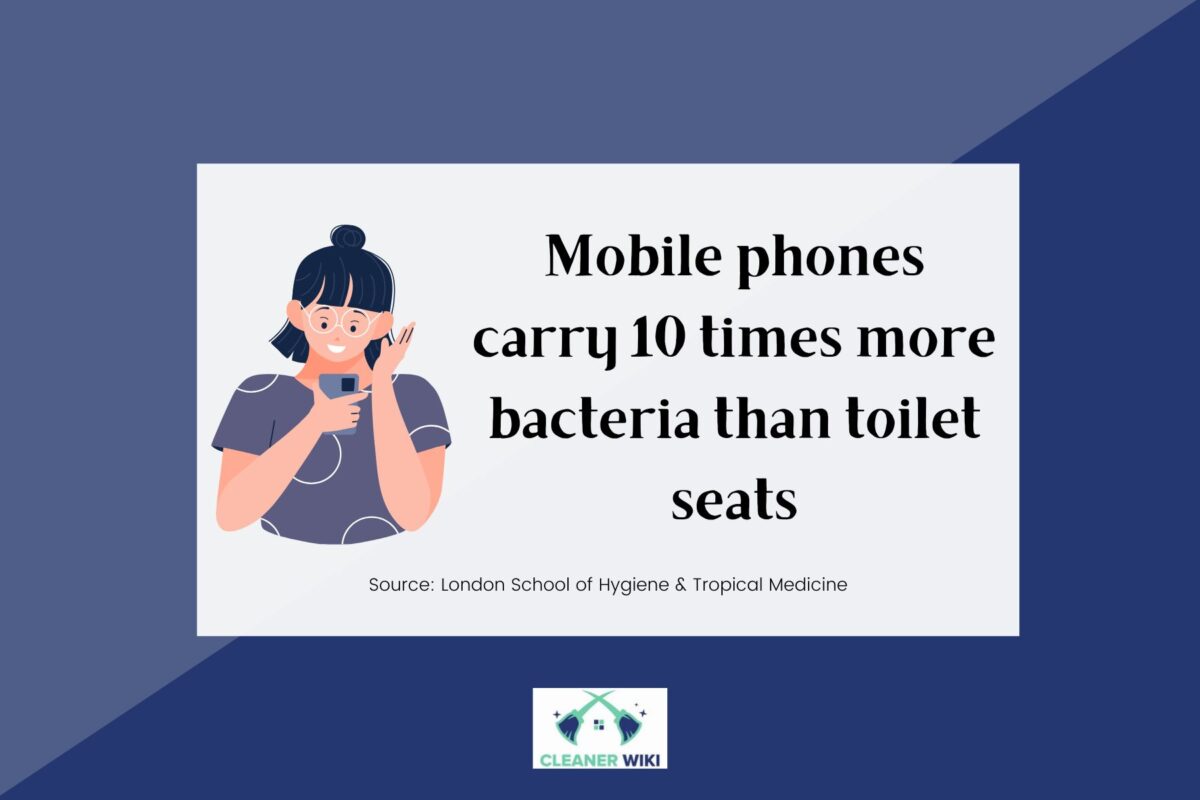
Keeping your cell phone clean is crucial for preventing the spread of germs, especially considering that a study in 2012 discovered that around 16% of cell phones carry fecal matter. To ensure your phone remains free from harmful bacteria, follow these actionable tips:
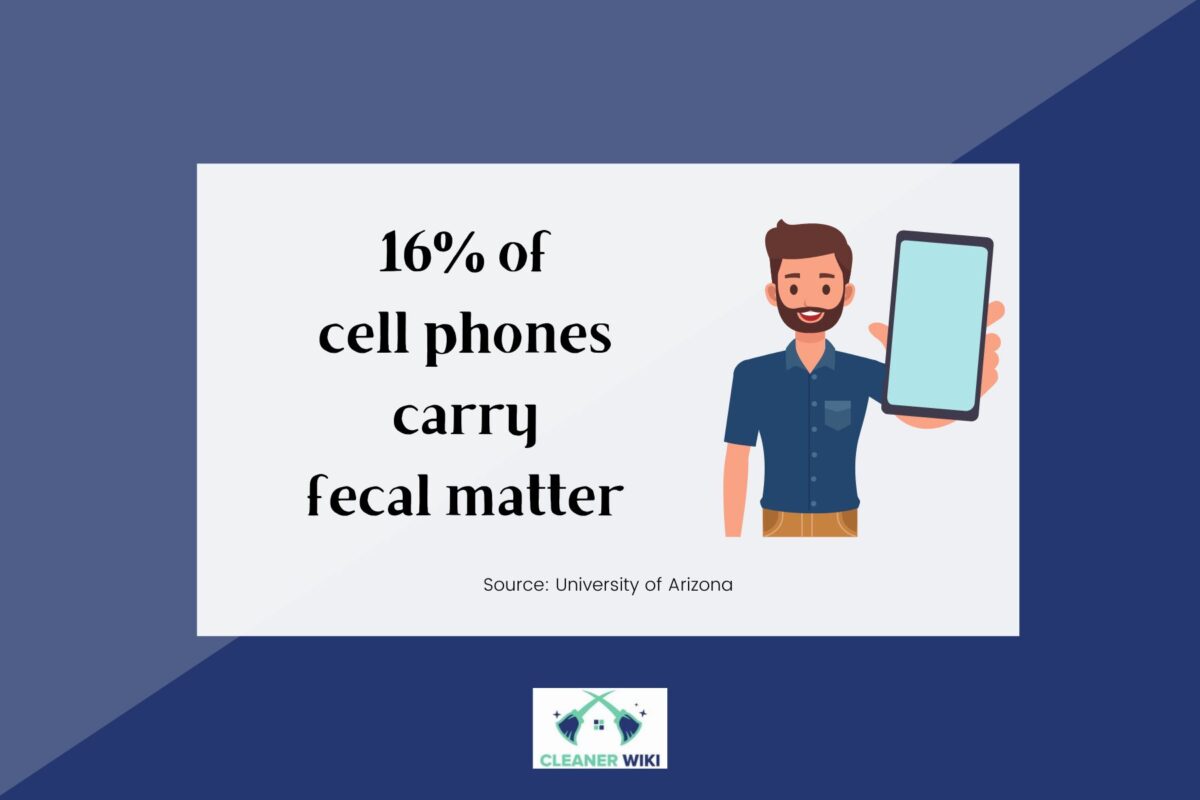
- Regularly clean your phone: Wipe down your phone regularly with a microfiber cloth or disinfectant wipes. Pay extra attention to the screen, buttons, and back of the phone, as these areas often harbor the most bacteria.
- Avoid using your phone in high-risk areas: Avoid using your phone in places where germs are prevalent, such as public restrooms or while preparing food. Minimizing exposure to these environments can help reduce the transfer of bacteria to your phone.
- Practice good hand hygiene: Wash your hands frequently with soap and water or use hand sanitizer, especially before and after using your phone. This simple habit can help prevent the spread of germs from your hands to your device.
Tackle Bacteria in Your Kitchen Sponge
Ensuring your kitchen remains free from harmful bacteria is crucial for maintaining a healthy environment. Surprisingly, a 2015 study discovered that 75% of American dish sponges and rags tested positive for coliform bacteria, which can lead to food poisoning.

Kitchen sponges can be breeding grounds for an astonishing 10 million bacteria per square inch. However, with proper care, you can maintain a clean and healthy kitchen sponge. Consider these actionable tips to keep your sponge free from harmful germs:
- Rinse thoroughly after each use: Rinse your sponge thoroughly with warm water to remove any food particles and debris. Squeezing the sponge under running water helps dislodge trapped materials and prevents bacterial growth.
- Air-dry your sponge properly: To prevent bacterial buildup, allow your sponge to air-dry entirely between uses. Avoid leaving it in damp areas or storing it in an airtight container, as moisture encourages the growth of bacteria.
- Use a bleach solution for deep cleaning: Periodically deep-clean your kitchen sponge by soaking it in 1 bleach to 9 parts water for 5 minutes. Rinse it thoroughly afterward to remove any traces of bleach before using it again.
- Microwave your sponge: Place a damp sponge in the microwave and heat it on high for one minute. This quick and easy method can help kill bacteria that may be present on the sponge. Remember to let it cool before handling it.
- Use antibacterial dish soap: Choose an antibacterial dish soap when washing your dishes. These soaps are formulated to help eliminate bacteria and can provide an extra layer of cleanliness to your kitchen sponge.
Remember, a clean kitchen starts with a clean sponge. Implementing these simple tips can help reduce the risk of bacterial contamination and ensure a healthier cooking environment for you and your family.
Busting the Five-Second Rule Myth
Let’s debunk the widely believed five-second rule for dropped food once and for all. Contrary to popular belief, bacteria can attach to food within milliseconds, posing potential health risks. To maintain food safety and minimize the chances of bacterial contamination, follow these actionable tips:
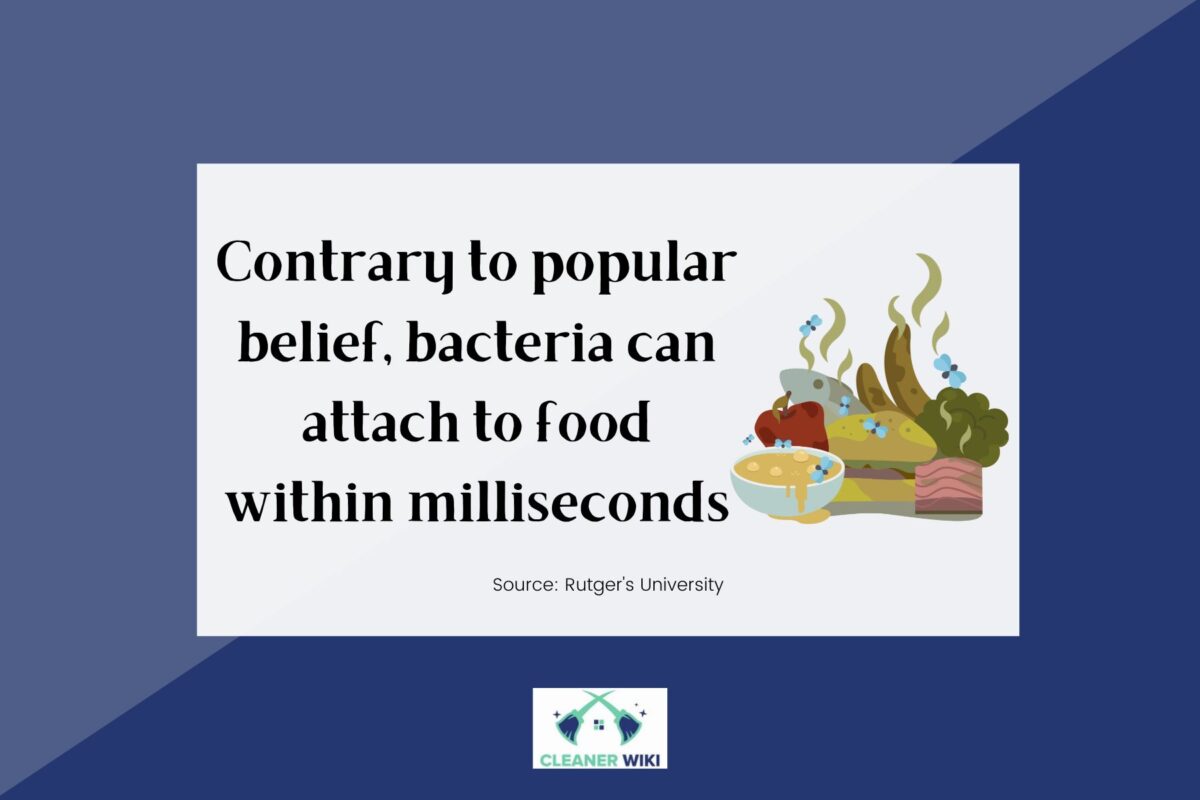
- Adopt a zero-tolerance approach: Instead of relying on a specific time frame, adopt a zero-tolerance policy for consuming food touching the floor or other contaminated surfaces. It’s best to discard any food that comes into contact with potential sources of bacteria.
- Clean and sanitize: Regularly clean and sanitize your kitchen surfaces, including countertops, cutting boards, and utensils. Use hot, soapy water or an appropriate disinfectant to eliminate bacteria and create a safe environment for food preparation.
- Practice safe food handling: Always wash your hands before handling food, and encourage proper hygiene practices among family members. Use clean utensils and plates, and avoid cross-contamination by keeping raw and cooked foods separate.
Food safety is paramount, and it’s always better to be cautious when consuming dropped food.
Clean Keyboards for a Healthy Workspace
Maintaining a clean keyboard is more important than you may think, as a survey shows that 34% of people neglect to clean their computer keyboards. To ensure a hygienic workspace and reduce the presence of dirt and germs on your keyboard, follow these actionable tips:
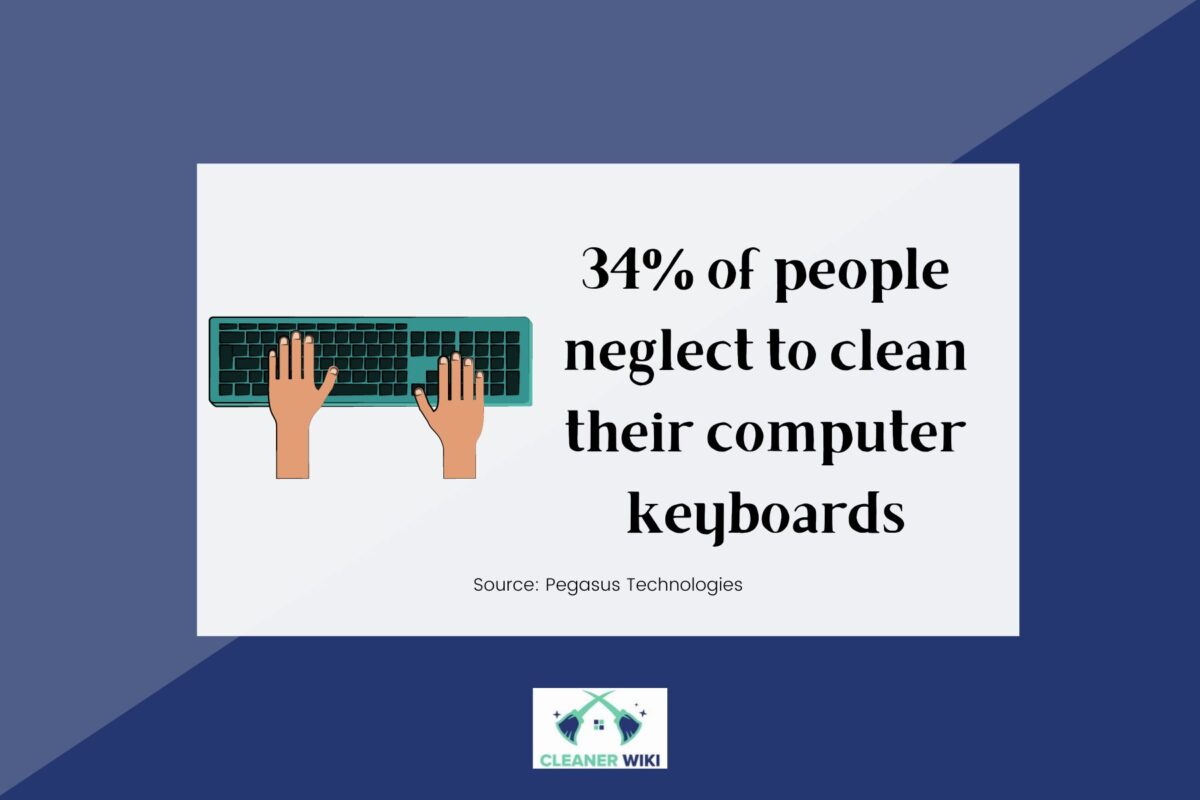
- Avoid eating at your desk: Eating at your desk can lead to food particles and crumbs getting lodged in the keyboard, providing a breeding ground for bacteria. Take breaks and designate a separate area for meals to minimize the risk of keyboard contamination.
- Use a keyboard cover or protector: Consider using a keyboard cover or protector to shield your keyboard from dust, spills, and debris. These protective covers can be easily removed and cleaned, offering additional defense against contamination.
- Use a keyboard cleaning tool: Invest in a keyboard cleaning tool, such as a small brush or a specialized kit. These tools are designed to reach between the keys and remove dust, debris, and potentially harmful particles.
Harness the Power of Handwashing
Frequent handwashing is a simple yet powerful way to reduce the risk of respiratory infections. According to the Centers for Disease Control and Prevention, regular handwashing can decrease the chances of respiratory infections by 16%. To keep yourself and those around you healthy, consider these actionable tips:
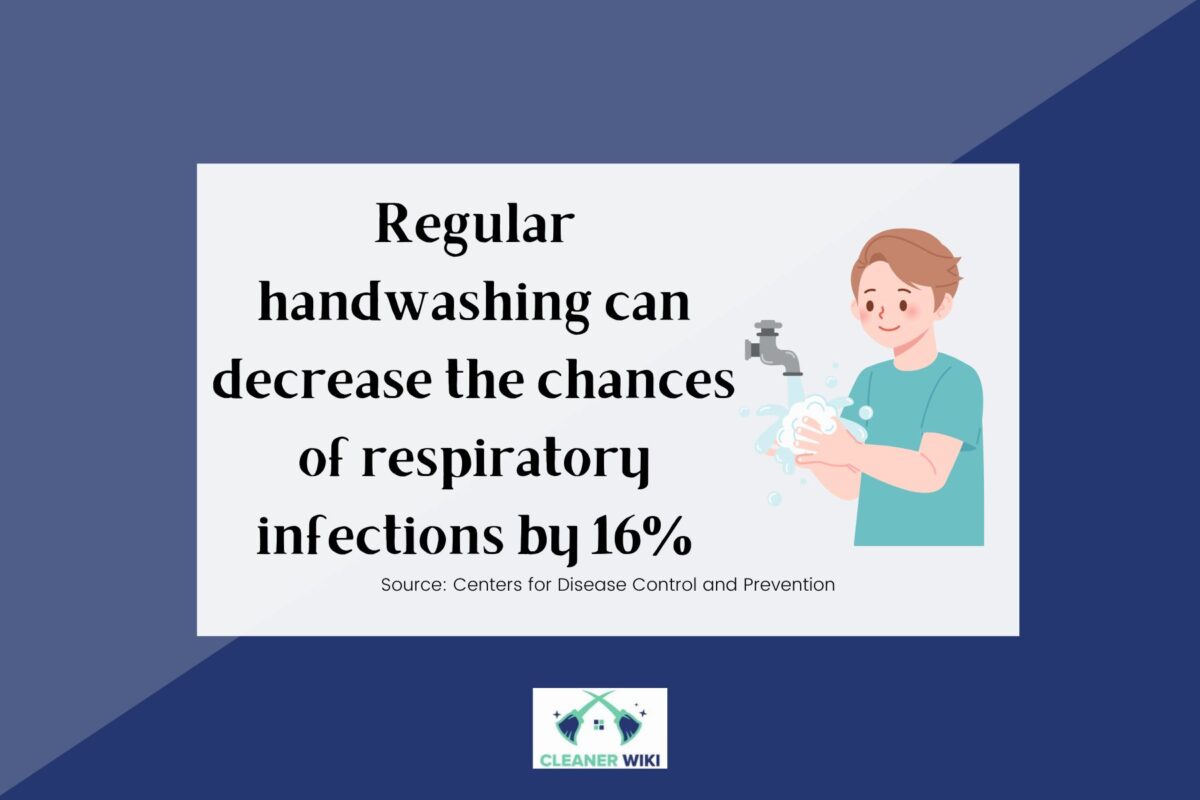
- Wash your hands thoroughly: Use soap and water to wash your hands for at least 20 seconds, making sure to cover all surfaces, including between your fingers, under your nails, and on the back of your hands. Proper handwashing removes germs effectively.
- Wash at critical times: Make it a habit to wash your hands at critical times, such as before and after preparing food, before eating, after using the restroom, after coughing or sneezing, and after being in public places. These moments are prime opportunities for germ transmission.
- Use hand sanitizer when soap is unavailable: When soap and water are not readily available, use an alcohol-based hand sanitizer that contains at least 60% alcohol. Apply enough sanitizer to cover all surfaces of your hands, and rub them together until they are dry.
Conclusion
Implementing these practical strategies can transform your cleaning experience and overcome common pain points. From burning calories, while vacuuming to debunking cleaning myths, the path to a sparkling and hygienic home is within reach.
Remember, the journey toward a cleaner living space starts with simple, practical actions. Embrace these tips and witness the transformative power of efficient cleaning practices. Your home will thank you with a renewed sense of freshness and well-being.
